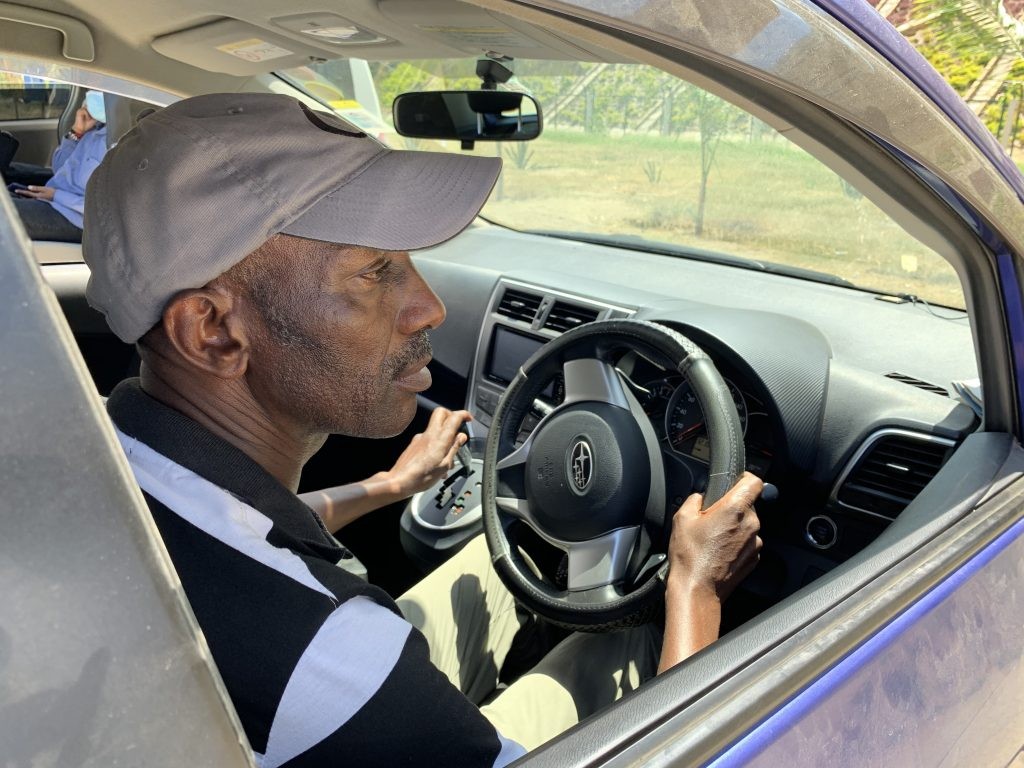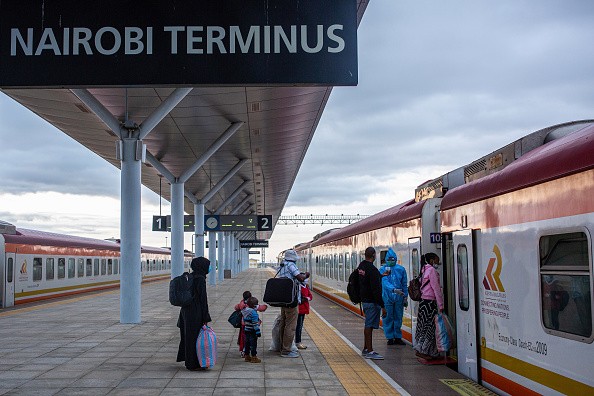
A general view shows a train on the SGR line in Kimuka, Kenya, on October 16, 2019./ VCG Photo
Railway transportation was introduced in Kenya in the 19th Century in 1896. The first rails were laid for the project that would become known as the “Lunatic Line’’. Its name was coined in a speech in Parliament in London regarding the ever-increasing costs of what appeared to be an exercise in futility.
This was a meter-gauge network that also crossed from Kenya to Uganda over a hundred years ago. The rail line was designed to improve Uganda’s access to the Indian Ocean through the Port of Mombasa.
But this mode of transportation has since undergone a major overhaul after the China Road and Bridge Corporation was contracted to build the Mombasa–Nairobi Standard Gauge Railway (SGR).
The project cost $3.6 billion. The main construction work on phase 1( Mombasa-Nairobi SGR line) began in December 2014 and was completed in Nairobi in May 2017.
Peter Kamau is a taxi operator based at the SGR Mombasa terminal. He has lived in the coastal city for over two decades, he has experienced both the lunatic train and now the SGR services. He says that with the launch of these new train services, a lot has changed not just for the transport sector but also in the tourism sector.

Peter Kamau, taxi driver based at the Standard Gauge Railway Mombasa terminus.
“I can say SGR has been of great importance to us because unlike in the past when we were used to international tourists arriving when SGR came, it improved domestic tourism. In the past, people were not used to domestic tourism but now, here at the coast, this [SGR] has really inspired many to start touring the region quite easily.”
Many SGR passengers say the train is more comfortable and convenient than bus transportation.
“We used to travel by bus which normally took almost 10 hours on the road from Nairobi-Mombasa. 10 hours of sitting in one position, and it really was uncomfortable,” said Naushev Ayub, who, when we spoke to him, was preparing to join his wife and a few friends, on their first night-time train ride to Mombasa to celebrate his son’s birthday.
He added that apart from the SGR train being faster than the bus, it can also accommodate more people, especially those traveling in large groups.
“This is the first time using the night train……probably I would say we booked where we would be staying the previous day and it made sense to travel overnight to then check-in in the morning,” said Sylvia Muitumi who was with a group of friends.
The Nairobi-Mombasa highway has been riddled with traffic jams which are mainly caused by long-distance tracks traveling from the coast to other parts of the Eastern Africa region. And many travelers especially on the SGR say travel time has been halved by the train services. Peter Kamau submits that being a taxi driver at the SGR terminal has made it easier to pick and drop off passengers at designated hours.
“SGR has shortened the time between Mombasa and Nairobi as compared to the buses which took almost the entire day. Travelers were not even aware of the exact time of arrival to their destinations. But SGR has a standard time that one can rely on. This is good for taxi drivers because you already know the exact time to pick a passenger at the station.”

A Kenya Railways Corp. train attendant wearing personal protective equipment (PPE) assists passengers to board a train on the Mombasa-Nairobi Standard Gauge Railway (SGR) line at the Nairobi Standard Gauge Railway (SGR) Terminus in Nairobi, on Tuesday, Aug. 18, 2020. The railway, funded, built, and operated by Chinese agencies, started running between Kenya’s port city of Mombasa to the capital, Nairobi, in 2017./Getty Images
The inter-county or Madaraka Express (morning) train departs Nairobi at 8:20 am and takes five hours, fifty-eight minutes arriving in Mombasa at 2:18 pm. The express (afternoon) train departs Nairobi at 2:35 pm and takes four hours, forty-three minutes arriving in Mombasa at 7:18 pm.
Some of the staff at the SGR also submitted that they are happy to be part of this journey.
“I am the deputy superintendent of the truck and signal department. When I see containers being loaded and transported to Mombasa and they are shipped, I feel so proud.” Titus Kiprop, Deputy Superintendent, Truck and Signal, Afristar.
“SGR has really impacted society in a positive way. When I report to work and I know that maybe I am ferrying people from Nairobi to Mombasa then it keeps me going, knowing that I am impacting society in a positive way. And when I see cargo flowing to and from Mombasa, and I know that I am the one responsible for such a huge task to be achieved then it really motivates me to keep working,” David Kimani, Locomotive Driver, Afristar.
According to figures from Kenya Railways Corporation and the Kenya National Bureau of Statistics (KNBS), the passenger train since it hit the rails has ferried slightly over 5 million people between Mombasa and Nairobi. In 2017 between June and December, 699,055 passengers used the train. In 2018 that number doubled to 1,700,000 travelers. In 2019, 1.59 Million passengers traveled by train with the number reducing to 720,000 in 2020 in the face of the coronavirus pandemic. Between January and May 2021, it is reported that approximately 400,000 passengers have been on the train.
Cgtn.com
 Africa -China Review Africa -China Cooperation and Transformation
Africa -China Review Africa -China Cooperation and Transformation
